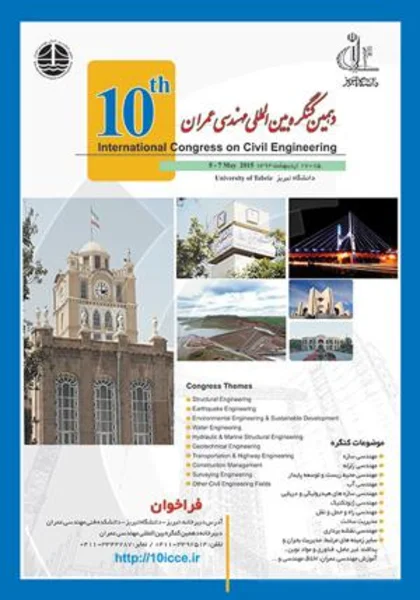-
boundary element method and its applications for plate tectonic deformation modeling
جزئیات بیشتر مقاله- تاریخ ارائه: 1393/11/01
- تاریخ انتشار در تی پی بین: 1393/11/01
- تعداد بازدید: 555
- تعداد پرسش و پاسخ ها: 0
- شماره تماس دبیرخانه رویداد: -
plate tectonic theory has provided a means to derive kinematics of plate margins, but analysis is limited when working on intra-continental deformation like iran plateau because, by definition, plates are rigid and do not deform. nevertheless, knowledge of the relative poles of rotation between two plates allows us to derive components of the deformation field in a diffusely deforming zone between two plates. other methods to derive the strain field include the use of high precision surveying (e.g., global positioning satellite system) and various geologic markers (e.g., faults, dikes, etc.). the former is limited to timescales that may be more representative of inter-seismic deformation and in response to the activity of perhaps a limited number of faults in any particular region. in this case, these observations may not represent the long-term average. the use of geological markers may be limited by the local setting (e.g., influenced by local anomalies in the regional stress field) or, in a practical sense, by the extensive amount of data needed to determine the regional stress field.
مقالات جدیدترین رویدادها
-
استفاده از تحلیل اهمیت-عملکرد در ارائه الگوی مدیریت خلاقیت سازمانی و ارائه راهکار جهت بهبود
-
بررسی تاثیر ارزش وجوه نقد مازاد بر ساختار سرمایه شرکت های پذیرفته شده در بورس اوراق بهادار تهران
-
بررسی تأثیر سطح افشای ریسک بر قرارداد بدهی شرکت های پذیرفته شده در بورس اوراق بهادار تهران
-
بررسی تأثیر رتبه بندی اعتباری مبتنی بر مدل امتیاز بازار نوظهور بر نقد شوندگی سهام با تأکید بر خصوصی سازی شرکت ها
-
تأثیر آمیخته بازاریابی پوشاک ایرانی بر تصویر ذهنی مشتری پوشاک ایرانی (هاکوپیان)
-
چگونه توانستم میزان علاقه مندی و یادگیری دانش آموزان پایه ی سوم ابتدایی در درس هدیه های آسمان را بیشتر کنم؟
-
بازی های دیجیتال؛ گفتمان سرمایه داری و فرهنگ مصرفی
-
حساسیت سنجی پارامترهای مقاومت برشی خاک بر نیروی کششی میخها در دو حالت دینامیکی و استاتیکی در تسلیح خاک به روش میخکوبی
-
بررسی آزمایشگاهی عملکرد ضرب های دال های بتنی مسلح شده به میلگرد gfrp
-
بررسی رابطه بین هوش هیجانی و مهارت های اجتماعی با اضطراب اجتماعی دانش آموزان دختر دوره متوسطه دوم شهر خدابنده
مقالات جدیدترین ژورنال ها
-
مدیریت و بررسی افسردگی دانش آموزان دختر مقطع متوسطه دوم در دروان کرونا در شهرستان دزفول
-
مدیریت و بررسی خرد سیاسی در اندیشه ی فردوسی در ادب ایران
-
واکاوی و مدیریت توصیفی قلمدان(جاکلیدی)ضریح در موزه آستان قدس رضوی
-
بررسی تاثیر خلاقیت، دانش و انگیزه کارکنان بر پیشنهادات نوآورانه کارکنان ( مورد مطالعه: هتل های 3 و 4 ستاره استان کرمان)
-
بررسی تاثیر کیفیت سیستم های اطلاعاتی بر تصمیم گیری موفق در شرکتهای تولیدی استان اصفهان (مورد مطالعه: مدیران شرکتهای تولیدی استان اصفهان)
-
نقش زنان در دستیابی و حفاظت محیط زیست
-
فقه امامیه و بانکداری اسلامی
-
مدل سازی تاثیر پارامترهای فیزیکی سطح و سیال بر خوردگی شناورها با استفاده از نرم افزار کامسول
-
ابعاد، خصوصیات و ویژگی های هوش هیجانی از منظر اسلام
-
seismic loss assessment: the case study of the power distribution network in arak city, iran




سوال خود را در مورد این مقاله مطرح نمایید :